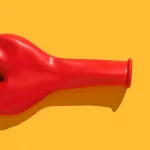Hey there! Ever caught yourself staring in the mirror, wishing your beard would just fill in already? Maybe you’ve got a few patchy spots that refuse to cooperate, or perhaps you’re rocking the baby-face look despite your best efforts. I get it—growing a beard can feel like a rite of passage, and when it doesn’t happen naturally, it’s frustrating. That’s where beard implants come in, and trust me, they’re way cooler than you might think! Imagine this: a fuller, thicker beard that’s all yours, no filters needed. Sound tempting? Let’s chat about what beard implants are, how they work, and whether they’re the right move for you. Grab a coffee, and let’s dive in—I’m excited to share this with you!
What Are Beard Implants, Anyway?
So, picture this: beard implants—sometimes called beard transplants—are like a superpower for your face. It’s a surgical procedure where hair from somewhere else on your body (usually the back of your head) gets moved to your jawline or cheeks to create the beard of your dreams. It’s not magic, but it sure feels like it! Think of it as transplanting a little garden onto your face—except instead of roses, you’re growing rugged, manly hair.
Why would someone do this? Well, maybe your beard’s patchy, or genetics didn’t bless you with much facial hair. Or hey, maybe you just want that Viking vibe! Whatever the reason, beard implants can help. And here’s a fun twist—did you know that beard hair is tough stuff? It resists DHT (that sneaky hormone behind hair loss), so it’s a great candidate for transplants, whether it’s staying on your face or even heading up top for a beard to head transplant. Yep, we’ll get into that later—it’s wild!
How Does It All Work? The Procedure Unpacked
Okay, let’s get into the good stuff—how do they actually pull this off? There are two main techniques surgeons use: FUE and FUT. Don’t worry if those sound like secret codes; I’ve got you covered.
FUE: The Precision Approach
First up is FUE, or Follicular Unit Extraction. This is the fancy way of saying they pluck individual hair follicles from your donor area—usually that thick patch at the back of your head—one by one. It’s like harvesting berries, picking just the ripest ones. The upside? No big scars, just tiny dots that heal fast. You’re back to your routine in a day or two, looking like nothing happened—well, except for the start of your epic beard.
FUT: The Big Harvest
Then there’s FUT, or Follicular Unit Transplantation. This one’s a bit different. Instead of going follicle by follicle, the surgeon removes a whole strip of skin from your scalp, then breaks it down into individual hairs to plant on your face. It’s like cutting a slice of cake instead of scooping out crumbs. You might end up with a linear scar back there, but if you need a ton of hair (think full-on lumberjack beard), this could be the way to go.
Whichever method they use, the process is pretty chill. They numb you up with local anesthesia—face and donor spot—so you’re just hanging out while they work their magic. The surgeon places each follicle into your face, following your natural beard pattern like an artist sketching a portrait. It’s meticulous, but that’s why it looks so real.
Recovery: What’s It Like After?
Now, what happens once you’re done? Recovery’s honestly not bad. Most guys are back to their normal lives the next day—work, gym, whatever. Your face might be a little red or swollen for a few days, kind of like you’ve been out in the sun too long. You’ll also see tiny scabs where the hairs went in, but don’t freak out—they flake off in a week. Pro tip: hands off! Picking at them is a no-no.
Here’s where it gets interesting: about two weeks in, those new hairs might fall out. I know, I know—panic mode, right? But it’s totally normal! It’s like the hair’s taking a quick snooze before it starts growing for real. Give it 3-4 months, and you’ll see sprouts. By 8-9 months? Boom, full beard glory. It’s a slow burn, but oh man, is it worth the wait.
Oh, and the donor area? That beard donor area healing part is smooth sailing too. With FUE, it’s barely noticeable after a week. FUT might take a bit longer because of the scar, but hair usually covers it up. Either way, you’re not walking around looking like a science experiment.
Beard Implants Cost: What’s the Damage?
Alright, let’s talk cash—because beard implants aren’t exactly pocket change. The price tag can swing from $3,000 to $15,000, sometimes more. Why so broad? It’s all about the details. Here’s a quick breakdown in a table to keep it simple:
| Cost Factor | Details |
|---|---|
| Average Cost Range | $3,000 – $15,000+ |
| Number of Grafts | 200 to 2,000+ hairs—more grafts, more money |
| Technique Used | FUE costs more than FUT usually |
| Where You Live | Big cities = higher prices |
| Surgeon’s Skill | Top pros charge a premium |
So, if you’re just patching up a small spot, you might land on the lower end—say, $3,000-$5,000. But if you’re dreaming of a beard that could star in a pirate movie, you’re looking at thousands of grafts and a heftier bill. Location plays a role too—think New York or LA versus a smaller town. And a rockstar surgeon with years of experience? Worth it, but they’ll charge for it.
Heads up: insurance won’t touch this—it’s cosmetic, so it’s all on you. But some clinics offer payment plans, which can soften the blow. Curious about your own beard implants cost? It’s worth a chat with a surgeon to get a personalized quote.
Finding Your Beard Wizard: Choosing a Surgeon
Here’s the deal: you wouldn’t let just anyone cut your hair, right? Same goes for beard implants. Picking the right surgeon is huge. You want someone who’s not only skilled but gets your vibe. Here’s how to find them:
- Check Credentials: Look for board-certified pros, like those listed by the American Board of Hair Restoration Surgeons (ABHRS). It’s a solid stamp of trust.
- Ask About Experience: How many beard transplants have they done? What’s their track record? More reps usually mean better results.
- Dig Into Reviews: Scroll through what other patients say online, and peek at beard to scalp hair transplant before and after pics if they’ve got them. It’s like a sneak preview of your future beard!
- Who’s Doing the Work? Make sure the surgeon—not an assistant—is handling the key parts. This is your face we’re talking about!
When you meet them, don’t hold back. Ask everything: “How many grafts do I need?” “What’ll my beard look like?” A good surgeon will vibe with you, answer straight, and make you feel pumped—not pressured. I once chatted with a guy who said his surgeon sketched his new beard right on his face during the consult. How cool is that?
Risks and Bumps: What Could Happen?
Alright, let’s keep it real—nothing’s perfect, and beard implants have some risks. Most are minor, like swelling or redness for a few days. You might feel a little tight or numb where the hairs went in, but that fades. Those tiny scabs? They’re gone fast if you leave them alone.
But there’s a flip side. Infections can happen, though they’re rare with proper care. Sometimes hairs grow wonky or don’t take at all—bummer, but fixable. And if you pick a rookie surgeon, you might end up with a beard that looks more fake beard implants than natural. Not the goal! The key? Follow aftercare like it’s gospel and choose your doc wisely. Most guys sail through just fine.
Other Paths: Alternatives to Surgery
Maybe you’re reading this and thinking, “Surgery? Nah, not for me.” Totally fair! The good news? There are other ways to nudge your beard along, even if they’re not as dramatic as implants.
Minoxidil: The Beard Booster
Ever tried minoxidil? It’s that Rogaine stuff you rub on your face. Some dudes swear it turns scruff into a full beard. Results vary, though—one friend of mine got a solid stubble, while another saw zilch. Plus, you’ve got to keep using it, or the gains might vanish. It’s like watering a lawn—stop, and it dries up.
Lifestyle Hacks: Food and Fitness
Your daily habits matter too. Eating right—think protein, vitamins like biotin—and staying active can help hair health. I mean, who doesn’t want an excuse for steak night? But let’s be honest, it won’t turn a bare chin into a forest. Still, it’s a low-risk boost. What’s your go-to healthy meal?
Rock What You’ve Got
Sometimes, it’s about owning it. Trim your beard to play up the strong spots, or even dab on some beard filler (yep, makeup for men!). It’s not for everyone, but it’s cheap and easy. A buddy of mine shaved his patchy beard into a killer goatee and never looked back. Confidence can outshine any implant.
Beard to Head? The Bonus Perk
Here’s a wild twist: beard implants aren’t just for your face. If your scalp’s thinning and you’re out of donor hair up top, some surgeons use beard hair for a beard to head hair transplant. Crazy, right? The texture’s coarser, so it’s not always the first choice, but according to a study in the Journal of Plastic, Reconstructive & Aesthetic Surgery (JPRAS), it can work wonders in a pinch. Just imagine—your beard saving your hairline. Multitasking at its finest!
So, Is This Your Beard Moment?
Whew, we’ve covered a lot, haven’t we? Beard implants are like a secret weapon—pricey and a bit of a commitment, sure, but they can transform your look and boost your confidence like nothing else. From the procedure to the beard implants cost, the risks, and even Plan B options, you’ve got the full scoop now. If you’re vibing with the idea, start hunting for that perfect surgeon—your face deserves the best.
Not sold yet? That’s cool too. Maybe minoxidil’s your next experiment, or you’re ready to embrace your natural style. Whatever you choose, own it. A beard’s awesome, but it’s your swagger that seals the deal.
What do you think—ready to take the plunge or still mulling it over? Drop your thoughts below; I’d love to hear where you’re at! And if you’re leaning toward implants, book that consult. Your dream beard might be closer than you think. You’ve got this!
Quick note: This is just info to chew on—not medical advice. Chat with a pro before you decide anything big, okay?


















Leave a Reply
You must be logged in to post a comment.